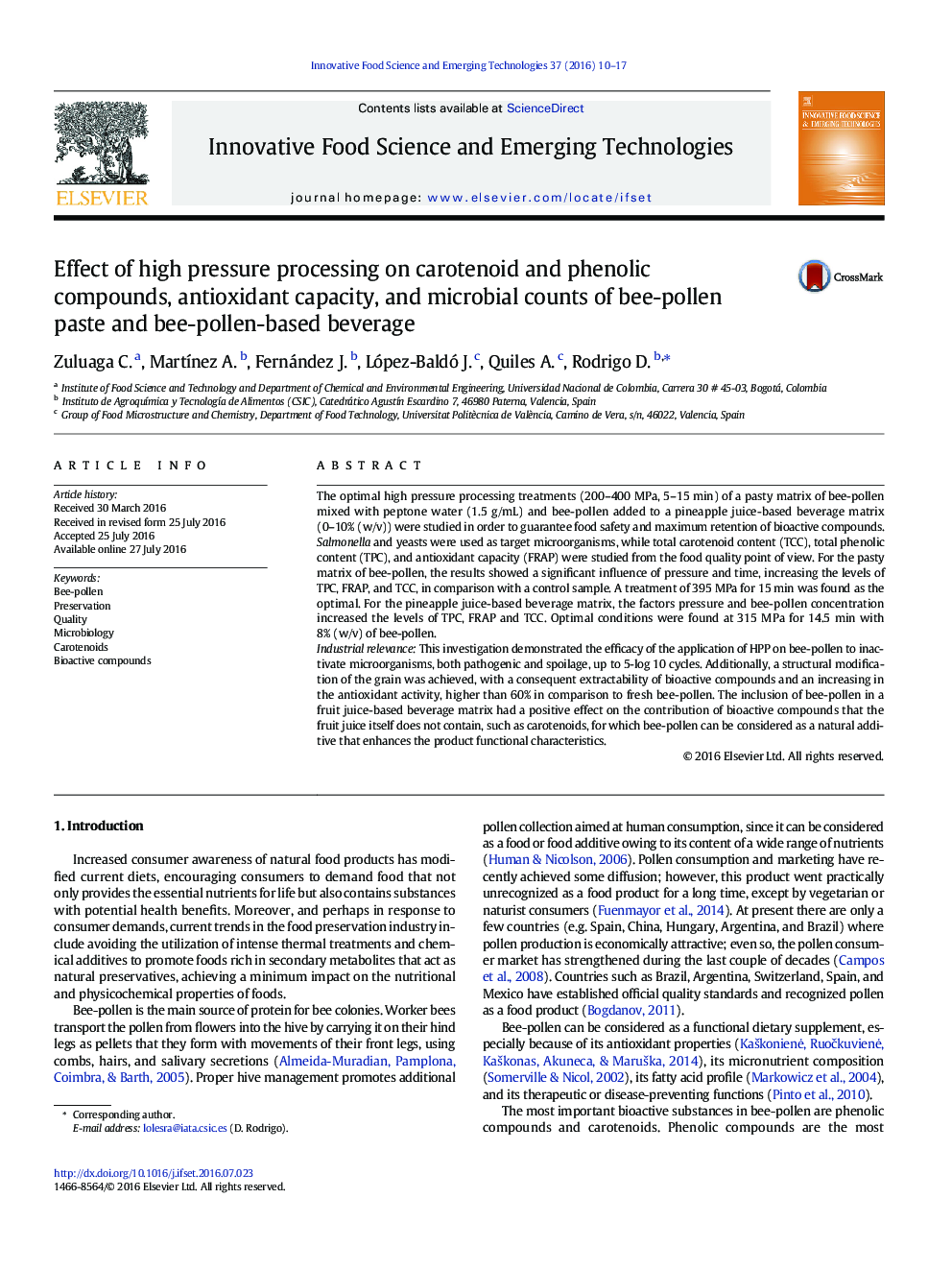| کد مقاله | کد نشریه | سال انتشار | مقاله انگلیسی | نسخه تمام متن |
|---|---|---|---|---|
| 2086225 | 1401281 | 2016 | 8 صفحه PDF | دانلود رایگان |
• High pressure processing was used to study its effects on bee-pollen.
• A pasty matrix and a juice-based beverage mixed with bee-pollen were treated.
• After HPP, bee-pollen carotenoid and phenolics contents increase up to 60% and 47%.
• Optimal conditions to treat a beverage with bee-pollen were 315 MPa, 14.5 min and 8%.
• Reductions up to 5 log cycles in undesirable microorganisms were found.
The optimal high pressure processing treatments (200–400 MPa, 5–15 min) of a pasty matrix of bee-pollen mixed with peptone water (1.5 g/mL) and bee-pollen added to a pineapple juice-based beverage matrix (0–10% (w/v)) were studied in order to guarantee food safety and maximum retention of bioactive compounds. Salmonella and yeasts were used as target microorganisms, while total carotenoid content (TCC), total phenolic content (TPC), and antioxidant capacity (FRAP) were studied from the food quality point of view. For the pasty matrix of bee-pollen, the results showed a significant influence of pressure and time, increasing the levels of TPC, FRAP, and TCC, in comparison with a control sample. A treatment of 395 MPa for 15 min was found as the optimal. For the pineapple juice-based beverage matrix, the factors pressure and bee-pollen concentration increased the levels of TPC, FRAP and TCC. Optimal conditions were found at 315 MPa for 14.5 min with 8% (w/v) of bee-pollen.Industrial relevanceThis investigation demonstrated the efficacy of the application of HPP on bee-pollen to inactivate microorganisms, both pathogenic and spoilage, up to 5-log 10 cycles. Additionally, a structural modification of the grain was achieved, with a consequent extractability of bioactive compounds and an increasing in the antioxidant activity, higher than 60% in comparison to fresh bee-pollen. The inclusion of bee-pollen in a fruit juice-based beverage matrix had a positive effect on the contribution of bioactive compounds that the fruit juice itself does not contain, such as carotenoids, for which bee-pollen can be considered as a natural additive that enhances the product functional characteristics.
Journal: Innovative Food Science & Emerging Technologies - Volume 37, Part A, October 2016, Pages 10–17
